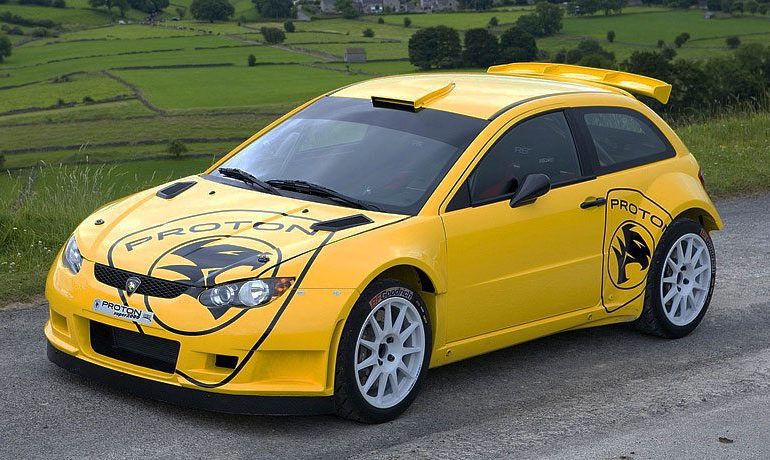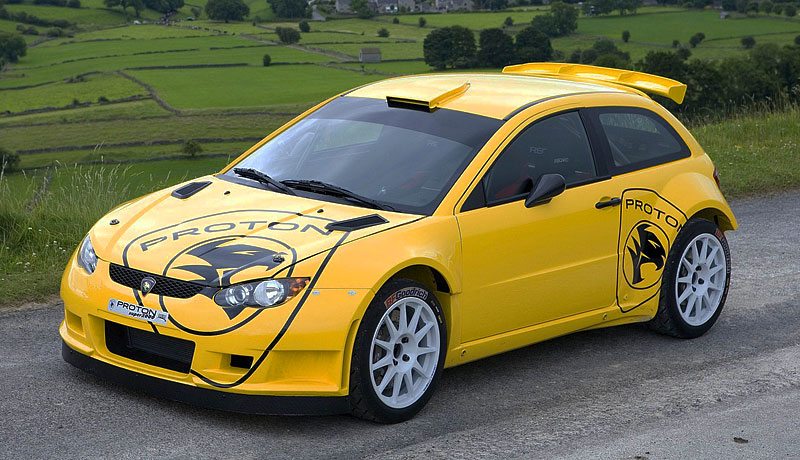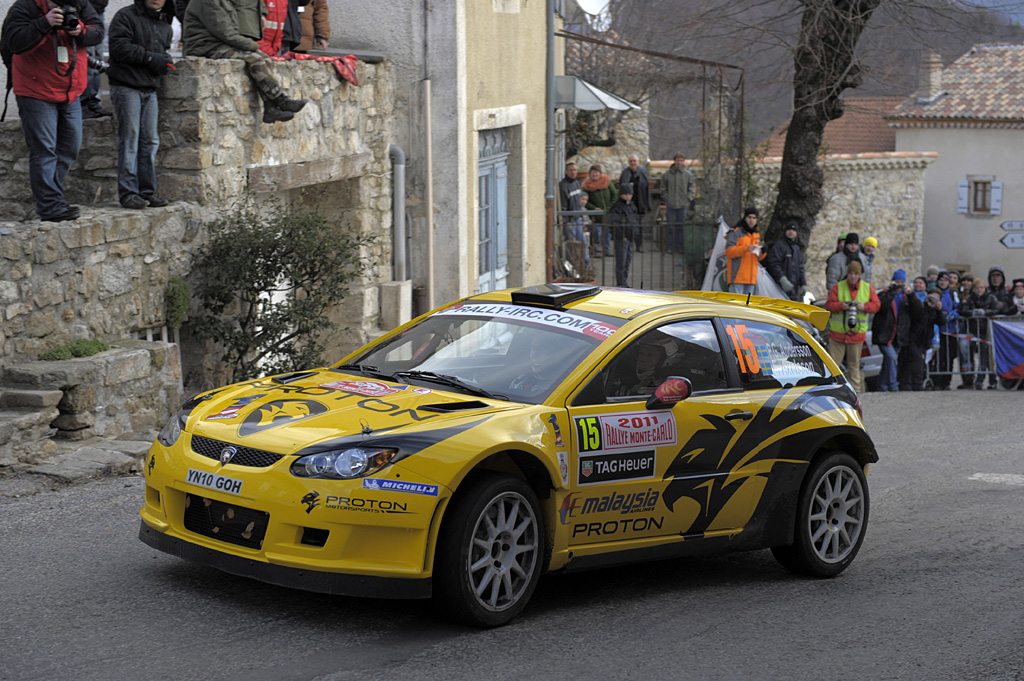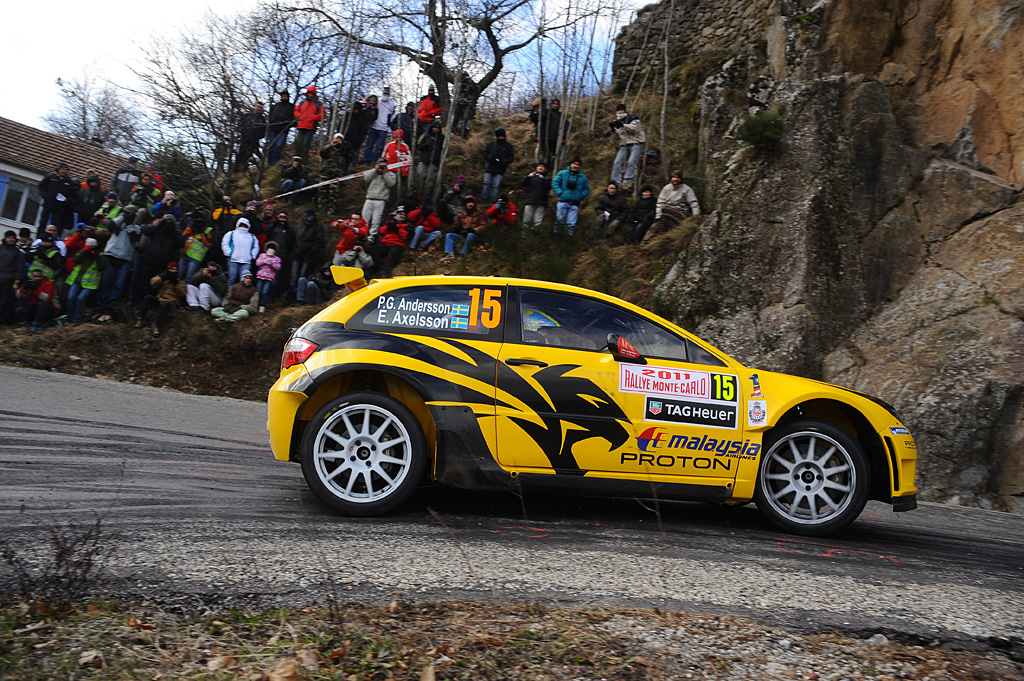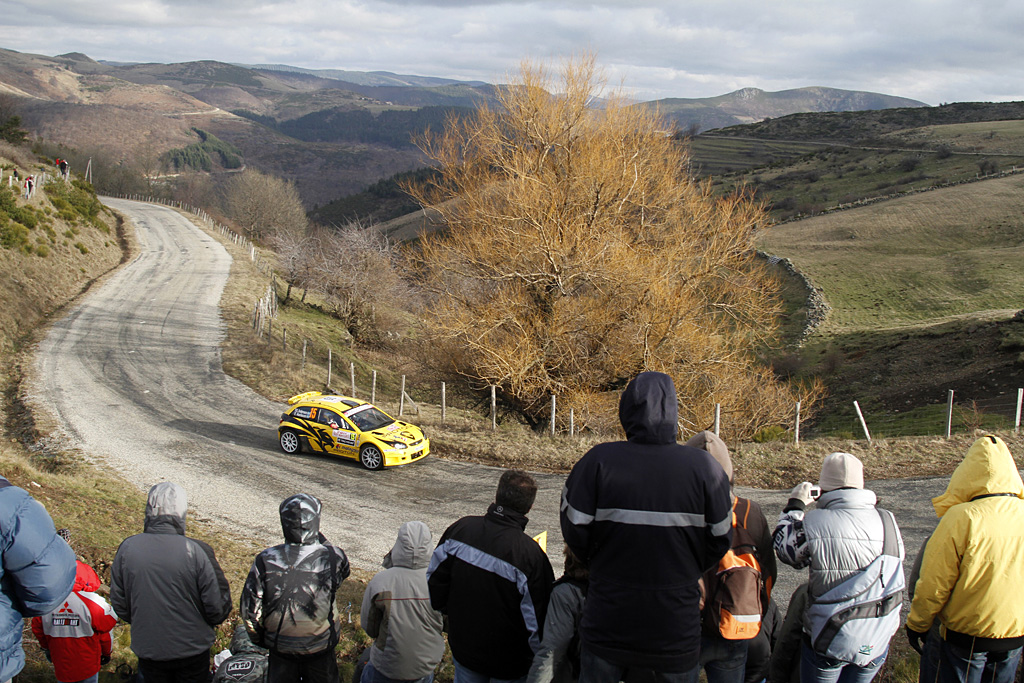2009 Proton Satria Neo Super 2000
Designed by Mellors Elliott Motorsport, (MEM), the new Proton Satria Neo Super 2000 rally car has just raised the performance bar for the rapidly expanding FIA Super 2000 rally series.
The concept was developed by using a combination of innovative engineering designs, the 25 years of experience of the team’s technical staff but, crucially, also the input from the team’s owner and extremely successful driver, Chris Mellors. The result is an astonishingly small and agile car which from the very outset was designed for the driver.
With an attractive and aerodynamic package for the front bumper, wings, rear bumper and rear spoiler complimenting the eye-catching Satria design, the Proton S2000 can achieve in full rally trim the smallest frontal area and the lowest roof height in its class even at rally ride height settings. Driver and Co-driver seat positions are fixed at the rearmost possible mounting points to maximise the car’s weight distribution but with the pedal box and steering column both adjustable to suit different pilots. The MEM rollcage design uses 35 metres of lightweight Chrome Moly tube together with strategic body strengthening resulting in vastly improved torsional bodyshell stiffness and a no-compromise safety cell for the crew. The cleverly designed side crash protection bars are uniquely shaped to aid driver and co-driver access into and out of the car.
The 2 litre Proton Super 2000 engine is derived from the 1.8 litre engine fitted to Proton’s Waja model and has been further developed by MEM’s engineers to produce a reliable 278 bhp @ 7600rpm with a usable power band from 5,500 to 8,500rpm. Combined with the best 6-speed sequential 4WD Super 2000 transmission currently available, (the “532” version from market leaders Xtrac), the car sets new standards for engine performance and driveability.
The fuel system innovates too with a quick-change fuel control cassette, (which includes all the fuel pumps, filters and valves), attached to the MEM-designed FIA FT3 safety fuel cell to aid rapid maintenance.
Alcon provides the braking power with their latest Super 2000 alloy 4-pot calipers and ventilated discs which combined with the Neo’s low overall weight of 1150kg gives astoundingly short braking distances. The ventilated disc sizes are independently maximised for both Gravel, (15” rims), and Tarmac, (18” rims), but for both simplicity and cost the brake calipers are common to both setups thanks to a simple mounting arrangement.
MEM’s engineers have designed the suspension with a relatively conventional layout of wishbone and MacPherson strut, which means it will be easy and relatively cheap to maintain whilst remaining super-reliable. However, the design has cleverly maximised damper travel to such an extent that the bump stops are the only part that stops the body sills hitting the ground on full bump travel! This translates into achieving both an ultra-low tarmac setup with go-kart levels of body roll and a long-travel gravel setup with enormous ability to soak up the biggest bumps. With various anti-roll bars available for both front and rear and with MEM’s 25 years of rally experience, the suspension setup can be easily fine-tuned for any rally surface or type.
The latest technology is used in the electrical systems with a state-of-the-art Multiplexed wiring system capable of managing the entire car’s electronics from a central unit ideally placed in the centre of the car in-between the driver and co-driver. Apart from the weight saving reduction that this achieves, it is simple to operate and, with automatically resetting circuit breakers, this is technology and reliability at its best.
The result of all this is a car which not only has well-proven technical advances and novel design but also has simplicity where appropriate to ensure the best possible combination of performance and reliability
Story by Mellors Elliot Motorsport
In Detail
| type | Racing Car |
| built at | Derbyshire, England |
| engine | MEM-Proton Inline-4 |
| position | Front, Transverse |
| power | 207.3 kw / 278 bhp @ 7600 rpm |
| bhp/weight | 241.74 bhp per tonne |
| body / frame | Unitary Steel Monocoque |
| driven wheels | 4WD |
| front brakes | Ventilated Discs w/Alcon 4-Piston Forged Calipers |
| rear brakes | Ventilated Discs w/Alcon 4-Piston Forged Calipers |
| front wheels | F 45.7 x 20.3 cm / 18 x 8 in |
| rear wheels | R 45.7 x 20.3 cm / 18 x 8 in |
| steering | Rack & Pinion w/Hyraulic Power Assist |
| f suspension | MacPherson Strut w/Lower Wishbone |
| r suspension | MacPherson Strut w/Lower Wishbone |
| curb weight | 1150 kg / 2535.75 lbs |
| wheelbase | 2440 mm / 96.1 in |
| front track | 1543 mm / 60.7 in |
| rear track | 1543 mm / 60.7 in |
| length | 3905 mm / 153.7 in |
| width | 1800 mm / 70.9 in |
| height | 1300 mm / 51.2 in |
| transmission | Xtrac 532 6-Speed Sequential |
| fuel capacity | 72 litres or 19.01 gal. |


